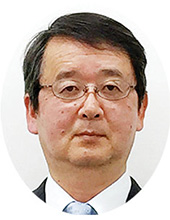
Ryo SHIBATA

Gou HOSOYA

Hiroyuki YASHIMA



Racetrack memory (RM) has attracted significant attention as an emerging non-volatile memory. In RM, stored bits are prone to experience alignment faults called position errors (PEs), which manifest as synchronization errors (insertions and deletions of stored bits). In general, RM utilizes one or more access port (APs) to read the stored bits, and the number of APs is one of the most important factors to determine the RM characteristics (e.g., storage density and access speed). Therefore, the important challenges are to clarify the relationship between reliability and the number of APs and to establish error-correction techniques that are specialized for PEs in RM.
In this paper, we modeled the synchronization errors due to PEs as a finite-state hidden Markov channel and then provided a numerical method to compute the achievable information rate with independent and uniformly distributed binary inputs over a PE channel. The newly introduced channel model with the computation method helped to reveal the relationship between reliability and the number of APs. We then proposed a joint iterative decoding algorithm for spatially coupled low-density parity-check (SC-LDPC) codes in the PE channel. This decoding algorithm is equal to a message-passing algorithm that operates in a factor graph consisting of subgraphs of the PE channel and LDPC code. We investigated the asymptotic behaviors of SC-LDPC codes under the proposed decoding algorithm using density evolution (DE). With DE, we revealed the relationship between the number of APs and iterative decoding thresholds. Moreover, gaps between the decoding thresholds and achievable information rates were narrowed by leveraging the structured irregularity of the SC-LDPC codes.
As described above, this paper addressed the reliability issue in RM and provided some useful insights, such as the relationship among the number of APs, achievable information rates, and decoding thresholds when using the SC-LDPC codes and joint iterative decoding algorithm.
These contributions make this paper deserving of the IEICE Best Paper Award.